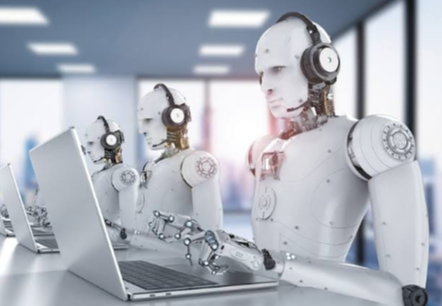How Automation Is Shaping the Future of Work

Automation is increasingly becoming a cornerstone of modern industries. It enhances efficiency and redefines traditional job roles. As tasks become automated, the demand for new skills intensifies. Workers must adapt to this evolving landscape by embracing digital literacy and critical thinking. However, this transformation raises questions about job security and the future workforce. What strategies can both workers and employers employ to navigate these changes effectively? The answers may hold the key to thriving in an automated world.
The Rise of Automation in Various Industries
As industries increasingly adopt advanced technologies, the rise of automation is reshaping the landscape of work across various sectors.
Manufacturing efficiency is significantly enhanced through robotics and streamlined processes, while service automation transforms customer interactions, reducing wait times and increasing satisfaction.
This evolution not only optimizes productivity but also challenges traditional roles, prompting a reevaluation of workforce dynamics and opportunities for innovation.
The Skills of the Future: Adapting to New Roles
While technological advancements drive the evolution of work, the demand for new skills is becoming increasingly critical.
Future roles will require a strong foundation in digital literacy to navigate complex technologies effectively. Additionally, critical thinking skills will enable individuals to solve problems creatively and adapt to rapid changes.
Emphasizing these competencies will empower the workforce to embrace opportunities within the shifting landscape of automation.
The Impact of Automation on Job Security
Although the rise of automation promises increased efficiency and productivity, it simultaneously raises significant concerns regarding job security for a vast number of workers.
With the potential for job displacement looming, many face uncertainty in an evolving landscape. This necessitates a workforce transition, where individuals must navigate the challenges posed by automation to maintain relevance and employability in a rapidly changing job market.
Embracing Change: Strategies for Workers and Employers
Recognizing the inevitability of change, both workers and employers must adopt proactive strategies to thrive in an automated environment.
Effective change management is essential, fostering resilience and adaptability. Employers should prioritize employee engagement, emphasizing continuous learning, open communication, and practical tools like a timesheet template to support productivity and transparency.
Meanwhile, workers must embrace upskilling opportunities, positioning themselves as valuable assets.
Together, these strategies create a dynamic workforce ready to navigate the future of work.
Conclusion
As automation weaves itself into the fabric of the workforce, it becomes essential for both workers and employers to adapt, much like a river carving new paths through a landscape. This transformation demands a commitment to continuous learning and flexibility, ensuring that employees can navigate the evolving job market with confidence. By embracing change and fostering a culture of skill development, organizations can thrive amidst disruption, turning potential challenges into opportunities for growth and innovation.



